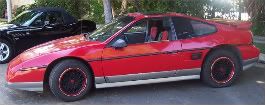Re: Getting 10psi Boost on a NA engine...
Lets see if I can help any further...
it goes on to say...
"The intake and exhaust sytems of a running engine constitute a highly complex system of high and low pressure waves resonating and bouncing around inside the plumbing."
The waves are caused by the valves which open and close. When the intake valve suddenly closes, that column of air that was rushing down the runner still has velocity and inertia. It therefore produces a "shock wave as the air smashes into the valve, sending a pressure pulse backwards into the intake manifold at the speed of sound."
At certain frequencies the opening and closing events will begin to resound or exho the air column in a "coordinated way otherwise known as resonance, which can cause energy from reflected pressure waves to combine with the force of static air pressure to push more air into the cylinder than would happen from air pressure alone."
Lets see if I can help any further...
it goes on to say...
"The intake and exhaust sytems of a running engine constitute a highly complex system of high and low pressure waves resonating and bouncing around inside the plumbing."
The waves are caused by the valves which open and close. When the intake valve suddenly closes, that column of air that was rushing down the runner still has velocity and inertia. It therefore produces a "shock wave as the air smashes into the valve, sending a pressure pulse backwards into the intake manifold at the speed of sound."
At certain frequencies the opening and closing events will begin to resound or exho the air column in a "coordinated way otherwise known as resonance, which can cause energy from reflected pressure waves to combine with the force of static air pressure to push more air into the cylinder than would happen from air pressure alone."










Comment